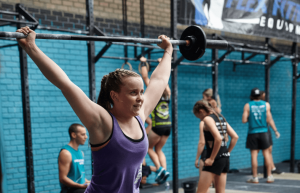Strength training for youth has become an integral part of sporting team training programs as well as both school sport and physical education classes in recent years.
While there are significant numbers of adolescents and children that participate in sporting activities, there is also the increasing health problems relating to inactivity and being overweight. This leads to a decline in muscular fitness and highlights a need to introduce participation in resistance training in both nonathlete and youth athlete demographics.
However, with this need to introduce resistance training to adolescents and children, there are still the common myths and misconceptions that lead to parents being reluctant to encourage this opportunity, like:
- Youth resistance training stunts growth,
- Children are unable to develop strength before puberty
- Youth may become “muscle bound” if exposed to resistance training
Gains in childhood strength are predominantly attributed to the neurological mechanisms of increases in motor neuron recruitment. The resultant increases in motor neuron recruitment allows for increases in strength without the resulting muscle hypertrophy.
All strength training programs for youth that are designed by qualified professionals have been shown to not have a negative effect on growth plate, linear growth, or cardiovascular health. Improvements in cardiovascular performance (aerobic) have been shown with a combination of resistance and fitness training without impairing strength gains of youth participants.
With technology ever expanding and the increase in usage of social media, developing the physical literacy of youth is difficult, and the assumption of already acquired movement skills –(i.e. running, jumping, hopping and throwing) is misguided.
Utilising a multimodal form of training that integrates resistance and core exercises, dynamic stability, plyometric and agility training in short intervals with intermittent periods of rest, referred to as Integrative Neuromuscular Training, can improve the muscular fitness of youth and decrease their injury risk whilst improving sports performance and enhancing motor skill development.
While there is currently no definitive age to begin resistance training, the following recommendations can help to guide you in the safe participation of resistance training:
- Seek medical clearance by a medical professional before beginning resistance training if they have any medical conditions.
- Integrate aerobic AND resistance training
- Encourage adequate hydration and proper nutrition as both are important for energy storage, recovery, and competition.
- Seek professional guidance to resistance training program development and utilise supervision to ensure proper technique, progression of skill and loading.
Below is the link to clinical report further detailing recommendations and expanding on other youth resistance training topics.
Stricker, P. R., Faigenbaum, A. D., McCambridge, T. M., LaBella, C. R., Brooks, M. A., Canty, G., … & Peterson, A. R. (2020). Resistance training for children and adolescents. Pediatrics, 145(6).




